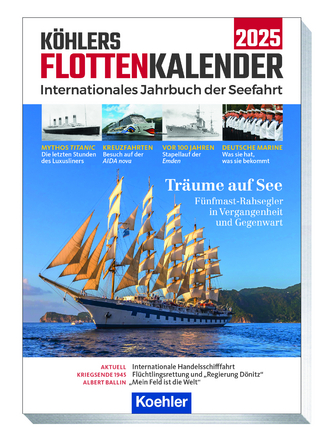
The Ships That Came to Manchester
From the Mersey and Weaver Sailing Flat to the Mighty Container Ship
Seiten
2015
Amberley Publishing (Verlag)
978-1-4456-5194-1 (ISBN)
Amberley Publishing (Verlag)
978-1-4456-5194-1 (ISBN)
Explore the fascinating history of the vessels of the Manchester Ship Canal.
The merchants of Manchester were concerned about the high tariffs charged at Liverpool Docks and the excessive rates for transhipment of goods to Manchester. They decided that the best thing for their trade was to bring seagoing ships up to Manchester. And this they did – via numerous enabling Bills and by grand-scale Victorian engineering. The Port of Manchester and its ship canal opened for business on 1 January 1894 with existing clients such as James Knott’s Prince Line running to the Mediterranean, and Fisher Renwick to London. But it could not readily entice the Liverpool shipowners to use Manchester, and it faced a long struggle to break the indifference of Conference Lines to the new port.
The First World War finally allayed any lingering worries over the inadequacies of Manchester and the Liverpool companies then arrived in abundance. Manchester had its own shipping companies, including Manchester Liners, H. Watson & Company, Sivewright Bacon, Manchester Steamship Company, Manchester Spanish Line and others. Business peaked at Manchester in the 1950s but rapidly declined through the 1970s as ships became too big to transit the canal.
Between 1894 and 1982 ships of all kinds docked at Manchester from all over the world; this is the story of the ships that came to Manchester.
The merchants of Manchester were concerned about the high tariffs charged at Liverpool Docks and the excessive rates for transhipment of goods to Manchester. They decided that the best thing for their trade was to bring seagoing ships up to Manchester. And this they did – via numerous enabling Bills and by grand-scale Victorian engineering. The Port of Manchester and its ship canal opened for business on 1 January 1894 with existing clients such as James Knott’s Prince Line running to the Mediterranean, and Fisher Renwick to London. But it could not readily entice the Liverpool shipowners to use Manchester, and it faced a long struggle to break the indifference of Conference Lines to the new port.
The First World War finally allayed any lingering worries over the inadequacies of Manchester and the Liverpool companies then arrived in abundance. Manchester had its own shipping companies, including Manchester Liners, H. Watson & Company, Sivewright Bacon, Manchester Steamship Company, Manchester Spanish Line and others. Business peaked at Manchester in the 1950s but rapidly declined through the 1970s as ships became too big to transit the canal.
Between 1894 and 1982 ships of all kinds docked at Manchester from all over the world; this is the story of the ships that came to Manchester.
Nick Robins is acknowledged for setting maritime history within the bigger social and political picture. His books describe the evolution of a variety of shipping themes, ranging from tugs and tenders to excursion steamers and even cruise ships, and he has recently published Scotland and the Sea, the Scottish Dimension in Maritime History.
| Erscheint lt. Verlag | 15.8.2015 |
|---|---|
| Zusatzinfo | 150 Illustrations |
| Verlagsort | Chalford |
| Sprache | englisch |
| Maße | 165 x 234 mm |
| Gewicht | 458 g |
| Themenwelt | Natur / Technik ► Fahrzeuge / Flugzeuge / Schiffe ► Schiffe |
| Geisteswissenschaften ► Geschichte ► Teilgebiete der Geschichte | |
| ISBN-10 | 1-4456-5194-7 / 1445651947 |
| ISBN-13 | 978-1-4456-5194-1 / 9781445651941 |
| Zustand | Neuware |
| Haben Sie eine Frage zum Produkt? |
Mehr entdecken
aus dem Bereich
aus dem Bereich
internationales Jahrbuch der Seefahrt
Buch | Softcover (2024)
Koehler in Maximilian Verlag GmbH & Co. KG
CHF 35,90


